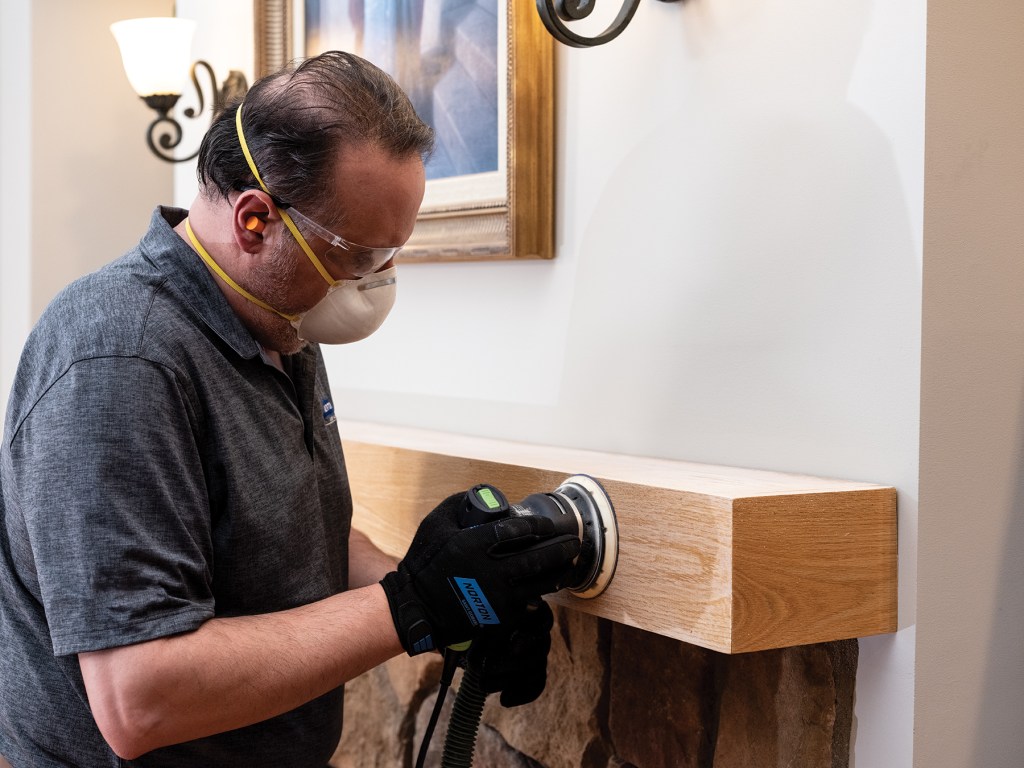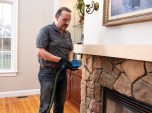Not much stands still in construction these days. It’s digital this, wireless that. Remember back when a 18V cordless drill was a big deal? Now just about every power tool is cordless. Some even pack 120V of battery power.
Continuous innovation is the watchword. Even with sanding, new technology has redefined basic speed, ease, and finishing quality.
Few follow that transformation more closely than Greg Mihaich, an application engineer at Norton Saint-Gobain, a leading abrasives manufacturer. Make no mistake – sanding sheets, blocks, sponges, with a generous amount of elbow grease – are here to stay. What’s changed is what you can expect from a basic stripping or finishing action.
“It’s easy to fall back on familiar ways, like standard sanding products,” says Mihaich. “A contractor may think, ‘How much better can the new stuff be?’’ It’s completely understandable. What the contractor doesn’t know is how much longer the new abrasives last, how much less dust they kick up, and how far fewer marks they leave. How different can it be?”
A lot, actually.
Next-gen ceramics, aluminum oxides, and manufacturing processes have upended expectations from sheet and sponge sanding as well as work from orbital, random orbital, disc, palm, and other power sanders.
Mihaich cites the evidence:
- Mesh Ceramic Grain. A mesh sanding screen works with any vacuum hole pattern to maximize dust extraction. What’s more, free-flowing mesh reduces dust loading minimal. “Ceramic grain is very sharp, lasts a long time, and produces a very fine scratch pattern,” reports Mihaich. “There’s nothing to line up with mesh, so the hole pattern doesn’t matter – it’s a universal extractor. There’s also a bit of a cushion on the back of the screen, helping to soften the cut a bit. “It may feel sharper than a standard product, but it’s not more aggressive. The scratch is shallow because the ceramic grain is uniform in size and shape.” Mihaich says aluminum oxide, by contrast, may require more pressure to achieve the same effect, say for stripping a coating or erasing planer marks. Grit is available from 80 to 320.
- Multi-Hole Disc Formats. Ceramic abrasives also support spiral-hole hook-and-loop vacuum designs. One version creates a suctioning cyclonic action that speeds dust removal and works with any random orbital sander. The sander hole pattern doesn’t matter, according to Mihaich. It works with Festool sanders, as well.
- Sponges. The world has changed for do-it-all sponges as well, with aluminum oxide endurance that runs up to 5x longer than standard sandpaper. Perfect for smoothing crown molding, curved millwork shapes, stair spindles, inside drywall corners and joints.
What Mihaich likes about next-gen discs like Norton MeshPower, ProSand Universal Vacuum Hole, and ProSand Multi-Air Cyclonic fit so easily into a workflow. If anything, the new stripping and finishing technology simplifies workflow with far fewer disc changes.
What does Mihaich reach for as his everyday sander? “A random orbital sander,” says veteran sanding expert without a pause. “They’re so versatile. They’re perfect for woodworking and large surface areas.”
Learn more about next-gen abrasives that sand faster, better, and more affordably.

